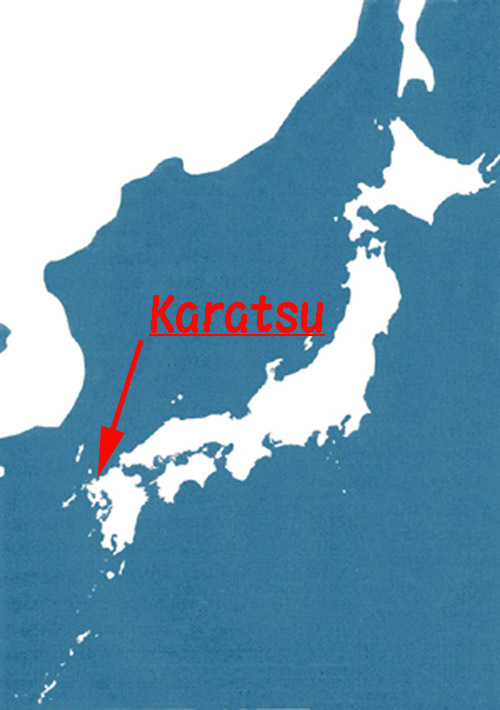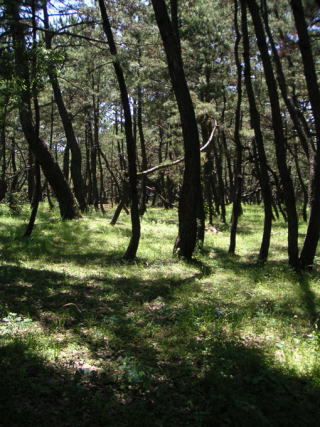
Karatsu is a city with a population of 130,000, located in Saga prefecture on Kyushu Island. The city extends along the bay of Karatsu where the Genkai Nada Sea forms an inlet to the south. The Matsuura River flows into the bay of Karatsu and creates beautiful white sand beaches on the coast. Pine tree forests line the beach, and one of the longest pine forests extends for 4 miles. This forest is called Niji No Matsubara. It means “Rainbow Pine Tree Forest”, because the shape of the entire forest arches along the beach like a rainbow. The beauty of the forest scenery has been chosen as one of the three most famous pine forests in Japan.
The climate in Karatsu is moderate; it is not too hot in summer and not too cold in winter. Thanks to the inlet, the breeze from the ocean is pleasant. You can see people who enjoy walking along the beaches, sunbathing, sailing or doing various water sports. Once you go into the pine tree forest next to the beach, you are suddenly sucked into the deep forest green. Light beams sometimes fall through and brighten the path you walk on. Needle-like leaves are gently waving on high from the ocean breeze.
The bay of Karatsu continues north to the Higashi-Matsuura Peninsula. The sea waves gradually roughen. The waves, constantly advancing and retreating, emerge on the skin of big rocks. Weather sharpens rocks and mountains to create a beauty of natural contrast. This peninsula is a basaltic plateau, where columnar joints form dramatic cliffs along the water. In contrast to basalts (hard volcanic black rocks deposited along the coast), the soil is red clay formed by the decomposition of basalt. It is not very suitable for rice farming. Therefore, you can see different kind of vegetation; some farmers raise livestock to cultivate beef cattle on this peninsula. Cattle can be seen feeding on green grass extending to the blue sea.
Offshore, there are many islands spreading far toward the Korean Peninsula. It is geographically close, with easy access for voyages to the Asian continent. The historically famous Kublai Khan of Mongolia attempted to invade Japan through this area in 1274. The absolute power of the Mongolian army overwhelmed the Japanese defense, but a miracle occurred, in which Japan could avoid being colonized. It was a typhoon that blew their boats and destroyed the Mongolian army. This typhoon, which saved Japan, is called KAMIKAZE (wind of god). The word "神風" (KAMIKAZE) comes from this event. Due to these unique geographical conditions, the area of Karatsu has been influenced by foreign cultures and has developed its own unique culture as a result. Karatsu Yaki is one example; it is sturdy clay pottery. The town of Arita, about 20 miles south of Karatsu, developed a world-renowned china, called Arita Yaki, or Imari ware.
If you are interested in our town, please come and visit us. It is about a 1 hour train ride from Fukuoka International Airport. Direct train service to Karatsu is available; it goes via subway lines. (Fukuoka is the largest city on Kyushu Island; its population is over 1.2 million.)

